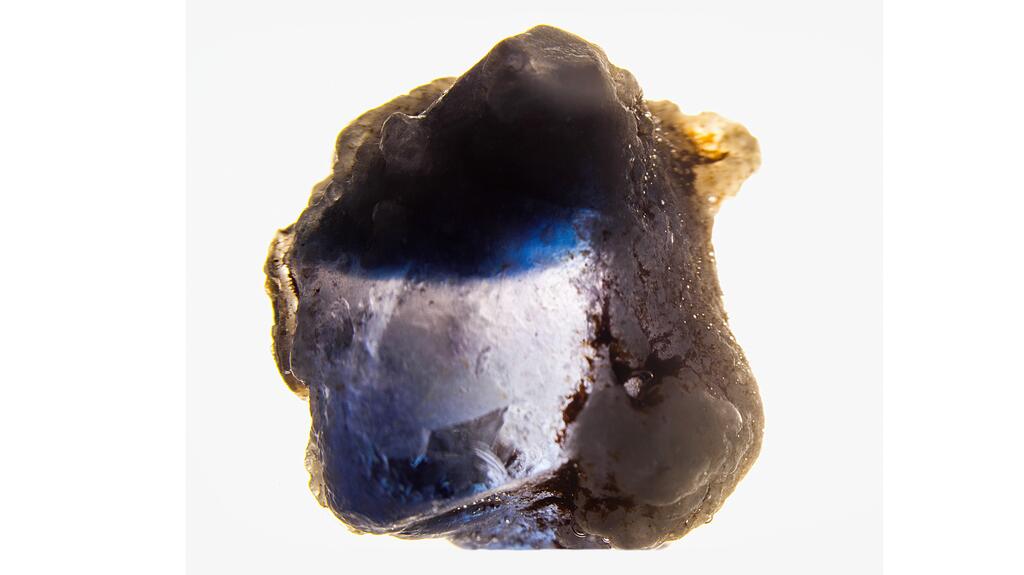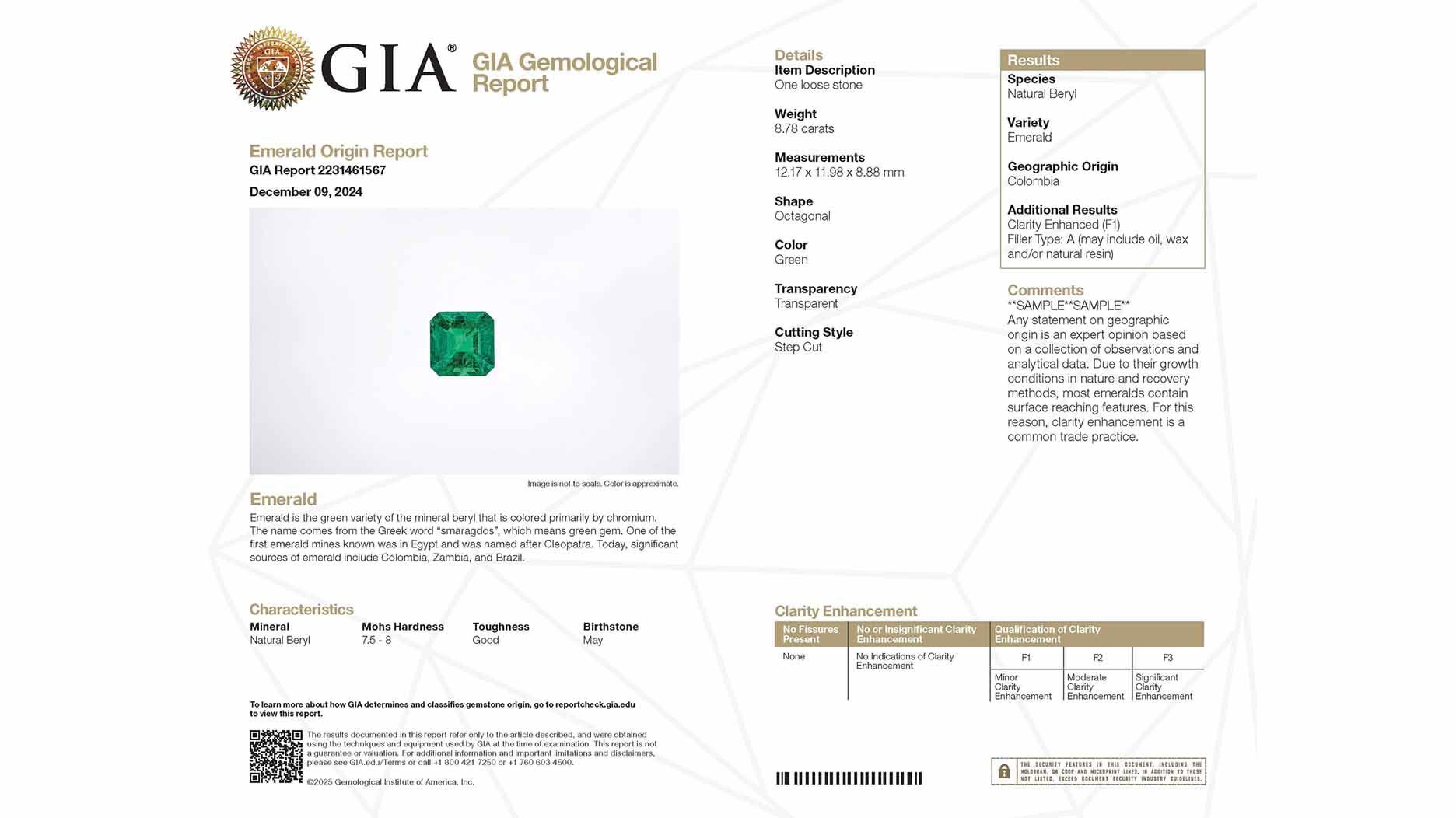GIA Finds Lab-Growns, Simulant in Parcel of ‘Natural’ Sapphires
It offered a look at how synthetics and simulants “can be mixed with their natural counterparts to misrepresent a parcel,” the lab said.

According to a lab note written by Najmeh Anjomani in GIA’s Summer 2022 Gems & Gemology issue, its Carlsbad lab recently received four rough blue stones submitted as natural sapphires for identification and origin reports.
The largest weighed 48.63 carats. It was partially fashioned, GIA said, with evidence of polish lines on its surface.
Examination under a microscope revealed gas bubbles, distinct flow marks, and conchoidal fractures, while the polariscope revealed weak snake pattern bands. Its hydrostatic specific gravity (SG) was 2.48.
All these observations together suggested a glass imitation, GIA said, which was confirmed by comparing the infrared spectrum with that of man-made glass.
Two of the other submitted blue stones, weighing 9.17 carats and 6.21 carats, were “more convincing imitations of natural sapphire,” GIA said.

There was a resin coating their surfaces that resembled a matrix commonly seen on natural rough corundum. GIA said the resin started to melt when touched with a hot point.
And though their rough surfaces made it difficult to see inside the stones, GIA was able to observe a few gas bubbles through a transparent area.
It also performed Raman spectroscopy, the results of which matched corundum, and immersed the stones in water, revealing curved blue banding.
GIA said laser ablation–inductively coupled plasma–mass spectrometry (LA-ICP-MS) revealed trace elements matching synthetic corundum. SG values were found to be 3.76 and 3.59, respectively, both of which are below the SG of corundum (3.9-4.05) and are a result of the lower SG of the surface resin.
The lab issued reports for both identifying them as lab-grown sapphires.
Finally, the fourth rough blue stone submitted weighed 8.46 carats.
It had a “frosted” natural surface that made it hard to see inside, but GIA said it was able to observe some natural-looking fingerprints and strong, straight “inky” blue banding.
The lab immersed the stone in methylene iodide to confirm the color zoning it saw was straight, an indication of a natural origin.
The Raman spectrum matched that of corundum, further confirmed by SG of 3.96.
GIA put the stone under shortwave UV and saw a medium chalky blue fluorescence.
LA-ICP-MS revealed a natural chemistry, including iron and trace elements such as gallium, vanadium, magnesium, chromium, and titanium.
Given its appearance, color zoning, and chemistry, the stone was identified as a natural sapphire, with its report noting it had been heated and was of Madagascar origin.
Anjomani said in the lab note that the four submitted stones provided an “interesting study of how synthetics and simulants can be mixed with their natural counterparts to misrepresent a parcel.”
The author noted, however, that “careful examination and standard gemological testing are usually enough to identify them correctly.”
The Latest

The special-edition egg pendant ingested in a New Zealand jewelry store was recovered after a six-day wait.

Associate Editor Natalie Francisco plays favorites with Piece of the Week, selecting a standout piece of jewelry from each month of 2025.

The “Love and Desire” campaign is inspired by the magic that follows when one’s heart leads the way, said the brand.

How Jewelers of America’s 20 Under 40 are leading to ensure a brighter future for the jewelry industry.

Berta de Pablos-Barbier will replace Alexander Lacik at the start of January, two months earlier than expected.


Sotheby’s held its first two jewelry sales at the Breuer building last week, and they totaled nearly $44 million.

Winners will receive free registration and lodging for its fourth annual event in Detroit.

Roseco’s 704-page catalog showcases new lab-grown diamonds, findings, tools & more—available in print or interactive digital editions.

Here are six ideas for making more engaging content for Instagram Reels and TikTok, courtesy of Duvall O’Steen and Jen Cullen Williams.

The honorees include a notable jewelry brand, an industry veteran, and an independent retailer.

Carlos Jose Hernandez and Joshua Zuazo were sentenced to life without the possibility of parole in the 2024 murder of Hussein “Sam” Murray.

Yood will serve alongside Eduard Stefanescu, the sustainability manager for C.Hafner, a precious metals refiner in Germany.

The New Orleans jeweler is also hosting pop-up jewelry boutiques in New York City and Dallas.

Set in a Tiffany & Co. necklace, it sold for $4.2 million, the highest price and price per carat paid for a Paraíba tourmaline at auction.

The jeweler’s “Deep Freeze” display showcases its iconic jewelry designs frozen in a vintage icebox.

Take luxury gifting to new heights this holiday season with the jeweler’s showstopping 12-carat sphene ring.

This year's theme is “Unveiling the Depths of the Ocean.”

In its annual report, Pinterest noted an increase in searches for brooches, heirloom jewelry, and ‘80s luxury.

The 111-year-old retailer celebrated the opening of its new location in Salem, New Hampshire, which is its third store in the state.

The new catalog features its most popular chains as well as new styles.

The filmmaker’s personal F.P. Journe “FFC” prototype was the star of Phillips’ recent record-setting watch auction in New York.

The new location in the Design District pays homage to Miami’s Art Deco heritage and its connection to the ocean.

Inflations, tariffs, and politics—including the government shutdown—were among consumers’ top concerns last month.

“Longtime favorite” presenters, as well as first-time speakers, will lead talks and workshops at the annual event in Tucson next year.

Silas Smith of Meridian Metalworks won the challenge with his pendant that blends Australian and American landscapes.

The sale of the 31.68-carat, sunset-hued stone was part of Sotheby’s first series of events and auctions in Abu Dhabi.

Most customers who walk into your store this month have made up their minds. Your job is to validate their choice, Emmanuel Raheb writes.






























